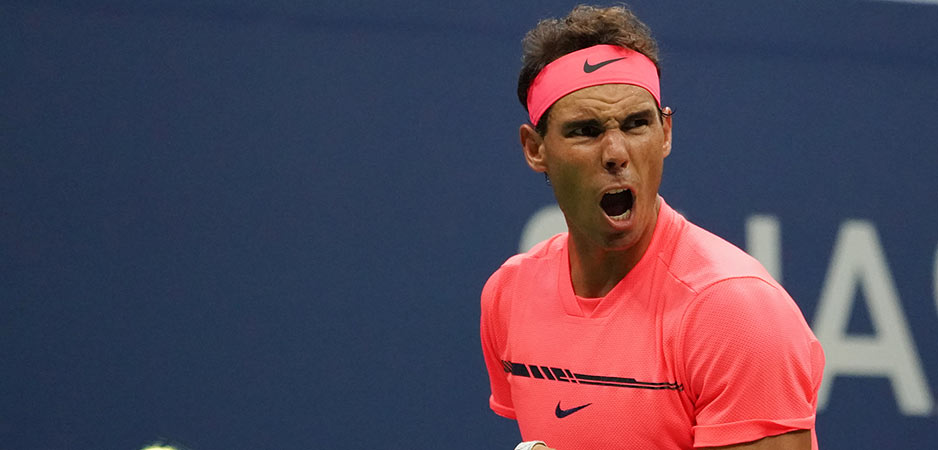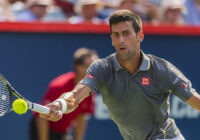Rafael Nadal, the “king of clay,” is a phenomenal tennis champion. His already lengthy career has showered him with fame and wealth. Who knows how many grand slams he would have won beyond the impressive 19 he already possesses had he not played in the same era as Roger Federer (20 grand slams) and Novak Djokovic (17)?
In all, since Federer’s first victory at Wimbledon in 2003, those three men have shared 56 of the 65 grand slam championships played. All three are still in the mix to add to their numbers, though Federer’s long shelf life is expected to reach its expiry date sometime soon, perhaps after his 40th birthday a year from now.
Despite the long interruption of the tennis season this year due to the COVID-19 pandemic, the big three — unlike the hundreds of ranked professionals they compete against — have no financial worries. Most of their income derives not from prize money but from contracts with prestigious sponsors.
A Tale of Two Democratic Women
Although an injury ended up canceling his entire 2020 season, Federer tops all professional athletes in earnings with an estimated income of $106 million per year. Nadal pulls in a paltry $40 million a year. According to Forbes, Nadal nevertheless decided to splurge in June of this year and offered himself a special present for his 34th birthday, a custom-built Sunreef 80 superyacht at a cost of $6.2 million.
The website Tennis World interviewed Nadal with the goal of understanding why, with such limited means, he offered himself such an extravagant gift. His response to their questions reads like an advertisement for Sunreef, touting its luxurious features. The other players on the pro tour can read it with envy, knowing they will never attain that level of consumer satisfaction.
Asked by journalist Dzevad Mesic “to explain what inspired him to build his own yacht,” Nadal admitted that it added an important dimension to his “personal life” but presented it at least partially as a professional investment because “it helps me restore positive energy. That’s something that helps me move forward with my tennis career, it’s one of the things I really appreciate in boating. Of course, to go for ownership is a tough decision, because it’s expensive, but it’s just good for my personal life.”
Here is today’s 3D definition:
Positive energy:
A psychic force field available in abundance to people with significant financial means who understand which of the objects they can buy will have the strongest effect on comforting and reinforcing either their finances, their ego or both
Contextual Note
Physicists cite positive energy as a fundamental concept for describing the universe. Natalie Wolchover, writing for Live Science, defines the scientific notion in these terms: “Light, matter and antimatter are what physicists call ‘positive energy.’” This differs from the use of the concept by people, like Nadal, who describe it as a component of their psychic metabolism. For them, it refers to something that has no objective scientific status but which everyone spontaneously seems to understand.
Joachim I. Krueger is a psychologist who is intrigued by the concept but admits that it is difficult to pin it down in scientific terms. Writing for Psychology Today, he nevertheless offers this somewhat banal insight: “I think it is safe to say that most people would rather project positive than negative energy onto others.” He then adds this recommendation, with a tinge of scientific irony: “Just become the perfect person, and you will be regarded as someone with positive energy.”
In his pitch for Sunreef yachts, Nadal seems less concerned with projecting positive energy for the benefit of other people than mobilizing it for his lucrative career. That makes sense. If the only way to pay for a yacht is to earn the money that accrues thanks to new input of positive energy, then the circle is squared. The more positive energy one has, the more money one will have to buy a bigger and bigger boat (Nadal admits he has had three, each one bigger than the preceding one).
Nadal admits “ownership is a tough decision, because it’s expensive.” He may be thinking that at the end of his tennis career, when his current $40 million revenue stream is no longer assured, he may not be able to afford the maintenance. But he’s right to assess that the positive energy it creates while he is still an active professional will help to prolong his career and even increase his immediate chances of success. Any decent financial adviser would tell him that it’s an investment that pays for itself.
Historical Note
In 1968, the prize money for the winner of the men’s singles at Wimbledon was £2,000 ($2,638) and for the ladies’ singles, £800. In 2018, it reached £2.25 million ($2.97 million) for both genders. Players who lost in the first round in 1968 went home with £50, enough to pay for at least a week of bed and breakfast and dinner at an Indian restaurant for themselves and possibly even a member of their family. History has not recorded how Rod Laver spent his £2,000. He earns considerably more today, at 82, with an estimated net worth of about $28 million, thanks to his talent at “maintaining his celebrity status.” He apparently does not own a yacht, though theoretically he could afford one.
With Roger Federer, Novak Djokovic and Rafael Nadal earning between $40 and $100 million per year, each of them can afford any item that will increase their positive energy and improve their chances of winning. But for most professional tennis players, it is a grind. If they have any talent for communication, however, they tend to make their living as teachers and coaches. But during a pandemic, even that becomes difficult.
Three authors writing for The Conversation “calculated the average career prize earnings of tennis players at around US$300,000. Around 80% of professional tennis players earn close to nothing.” The contrast with Federer, Nadal and Djokovic is flagrant. As everywhere else in the economy, the culture of meritocracy has played an increasing role in separating the winners, wallowing in opulence, from the losers struggling to survive. Thanks to everything they can buy to increase their chances of winning, the winners will keep winning at the expense of the losers who will keep losing. It has turned into a virtual caste system.
With the havoc caused by the pandemic, the brahmans of tennis — Federer, Djokovic and Nadal — proposed earlier this year that the international federation should set up a relief fund for players ranked between 250 and 700. Even that idea met with resistance from some of the top players, but, after some discussion and modification, it was finally put in place.
After the cancelation of Wimbledon and the postponement of the French Open, the US Open will kick off on August 31, without the presence of fans. Because of its seriously reduced revenue, the tournament has cut the envelope of prize money by nearly 7%. The winners’ prize will be 22% less than last year.
For their trouble, the struggling players who fail to survive the first round will earn $61,000, 5% more than in 2019. That’s nearly 25 times more than the 1968 Wimbledon champion, but clearly not enough to buy a yacht for those seriously interested in improving their positive energy.
*[In the age of Oscar Wilde and Mark Twain, another American wit, the journalist Ambrose Bierce, produced a series of satirical definitions of commonly used terms, throwing light on their hidden meanings in real discourse. Bierce eventually collected and published them as a book, The Devil’s Dictionary, in 1911. We have shamelessly appropriated his title in the interest of continuing his wholesome pedagogical effort to enlighten generations of readers of the news. Read more of The Daily Devil’s Dictionary on Fair Observer.]
The views expressed in this article are the author’s own and do not necessarily reflect Fair Observer’s editorial policy.
Support Fair Observer
We rely on your support for our independence, diversity and quality.
For more than 10 years, Fair Observer has been free, fair and independent. No billionaire owns us, no advertisers control us. We are a reader-supported nonprofit. Unlike many other publications, we keep our content free for readers regardless of where they live or whether they can afford to pay. We have no paywalls and no ads.
In the post-truth era of fake news, echo chambers and filter bubbles, we publish a plurality of perspectives from around the world. Anyone can publish with us, but everyone goes through a rigorous editorial process. So, you get fact-checked, well-reasoned content instead of noise.
We publish 2,500+ voices from 90+ countries. We also conduct education and training programs
on subjects ranging from digital media and journalism to writing and critical thinking. This
doesn’t come cheap. Servers, editors, trainers and web developers cost
money.
Please consider supporting us on a regular basis as a recurring donor or a
sustaining member.
Will you support FO’s journalism?
We rely on your support for our independence, diversity and quality.





